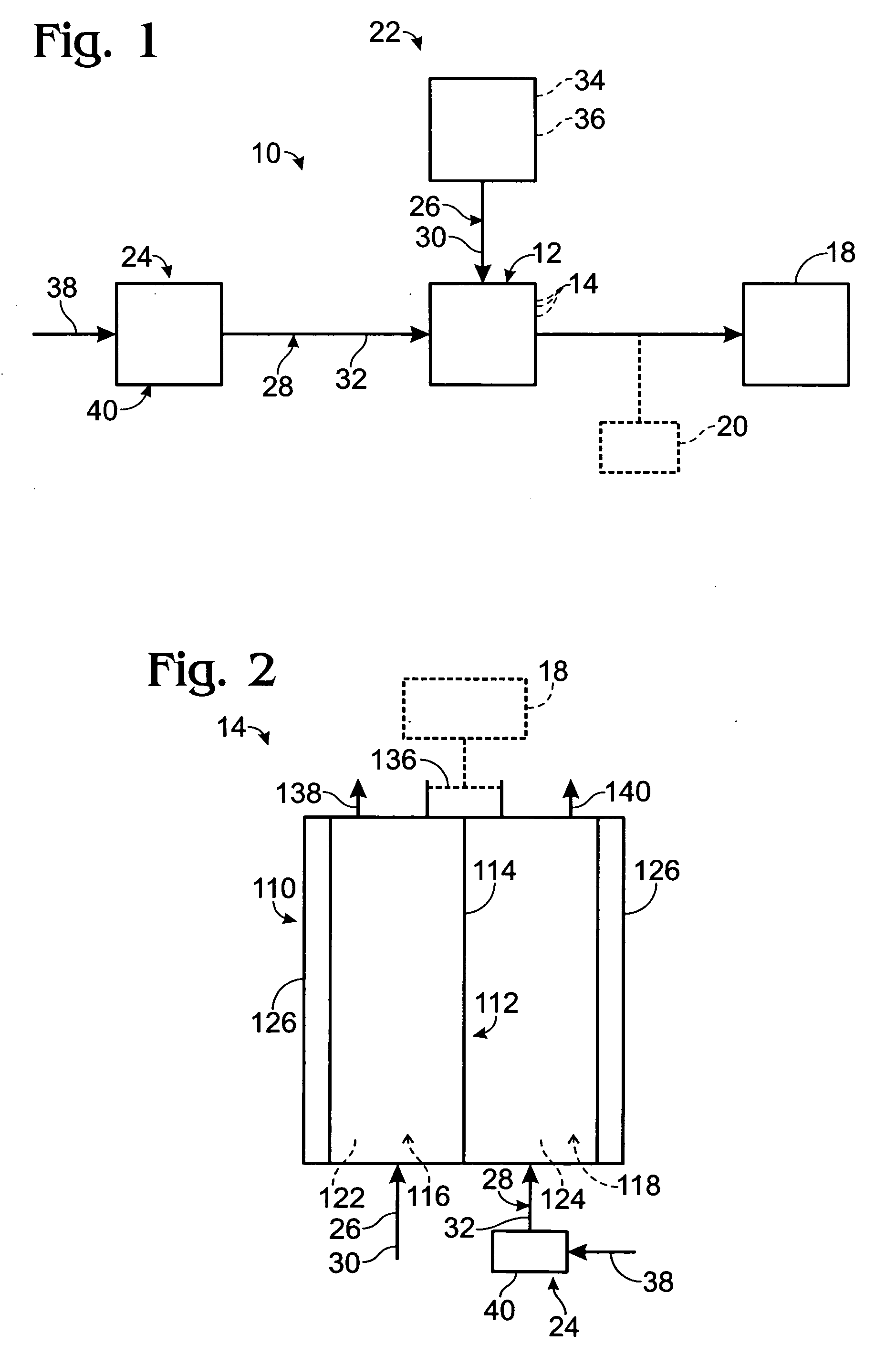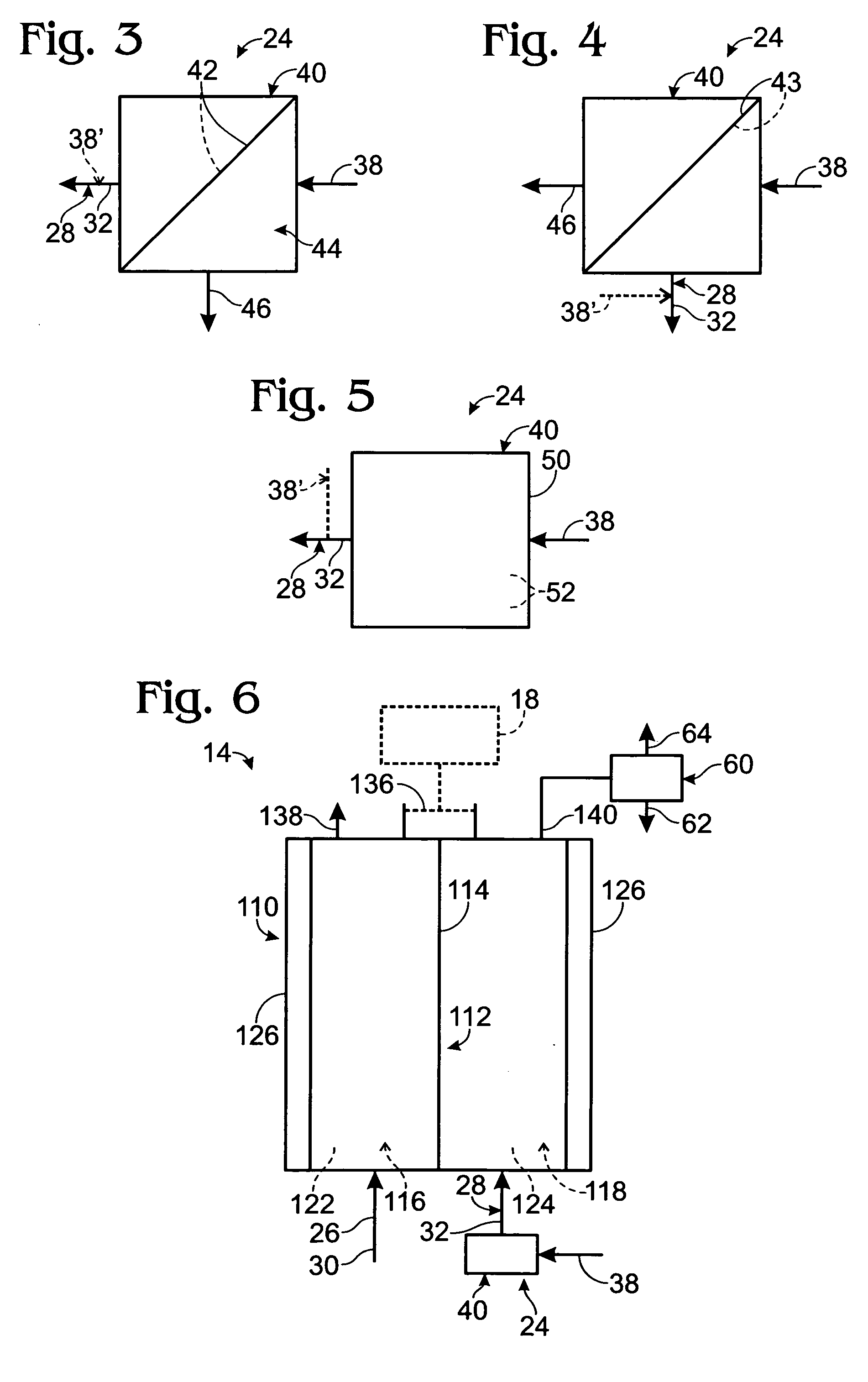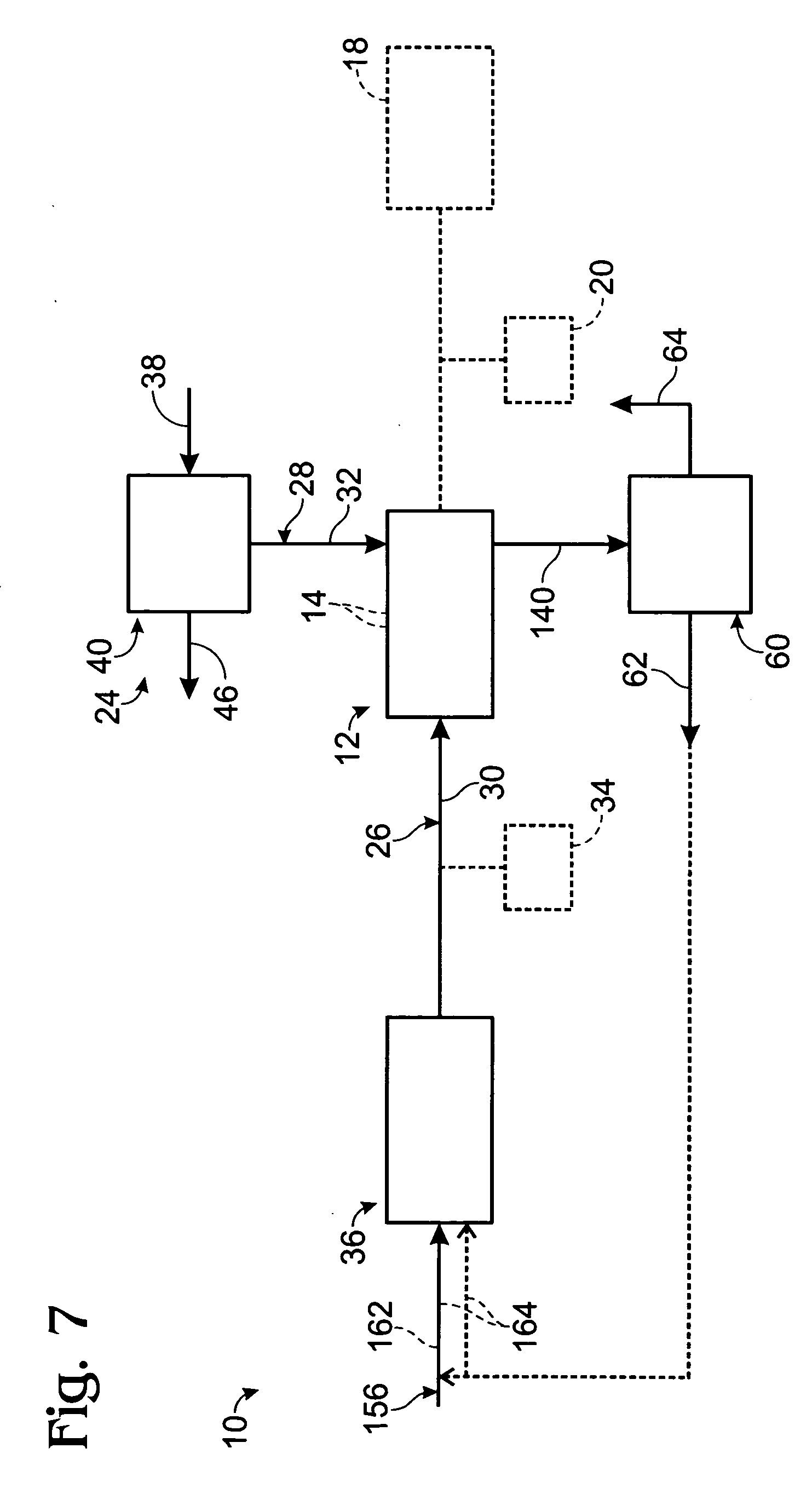Oxidant-enriched fuel cell system
a fuel cell and oxidant-enriched technology, applied in the field of fuel cell systems, can solve the problems of excessive noise of compressors, limited options for increasing the partial pressure of oxygen, and large energy required for compressing air
- Summary
- Abstract
- Description
- Claims
- Application Information
AI Technical Summary
Problems solved by technology
Method used
Image
Examples
Embodiment Construction
[0021] An illustrative example of a fuel cell system containing an oxygen-enrichment assembly according to the present disclosure is schematically illustrated in FIG. 1 and generally indicated at 10. System 10 includes at least one fuel cell stack 12. Fuel cell stack 12 includes at least one, and typically multiple, fuel cells 14 that are adapted to produce an electric current from fuel and oxidant streams 26 and 28 that are delivered thereto. The fuel cells are joined together, such as between common end plates, and are in fluid communication with the sources of fuel and oxidant via suitable fluid delivery conduits. Similarly, the fluids are removed from the cells (and stack) via suitable fluid removal conduits. A suitable fuel is a proton source, such as hydrogen gas 30, and a suitable oxidant is oxygen gas 32. For the purposes of simplicity, the following discussion will refer to hydrogen gas as the fuel and oxygen gas as the oxidant of the fuel cell stack. It is within the scope...
PUM
| Property | Measurement | Unit |
|---|---|---|
| current density | aaaaa | aaaaa |
| current density | aaaaa | aaaaa |
| pressure | aaaaa | aaaaa |
Abstract
Description
Claims
Application Information
 Login to View More
Login to View More - R&D
- Intellectual Property
- Life Sciences
- Materials
- Tech Scout
- Unparalleled Data Quality
- Higher Quality Content
- 60% Fewer Hallucinations
Browse by: Latest US Patents, China's latest patents, Technical Efficacy Thesaurus, Application Domain, Technology Topic, Popular Technical Reports.
© 2025 PatSnap. All rights reserved.Legal|Privacy policy|Modern Slavery Act Transparency Statement|Sitemap|About US| Contact US: help@patsnap.com



